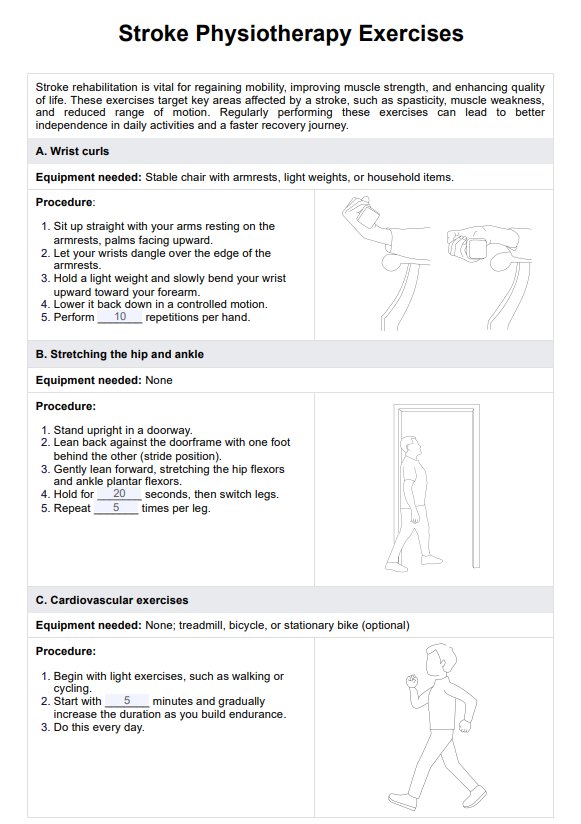The best exercise for a stroke patient depends on their specific impairments, but activities like trunk rotations and cardiovascular exercises are highly effective for improving mobility and strength. These exercises enhance motor function, balance, and overall physical recovery.

Stroke Physiotherapy Exercises PDF
Download Carepatron's Stroke Physiotherapy Exercises PDF to help in the rehabilitation process. These exercises can aid in recovery and improve mobility and function.
Stroke Physiotherapy Exercises PDF Template
Commonly asked questions
The brain begins healing immediately after a stroke, but noticeable recovery often takes weeks to months. Full recovery timelines vary, depending on the stroke's severity and the effectiveness of the rehabilitation process.
Physiotherapy aids stroke rehab by improving muscle strength, restoring movement, and enhancing balance and coordination. It focuses on tailored stroke exercises to promote functional recovery and increase independence in daily activities.
EHR and practice management software
Get started for free
*No credit card required
Free
$0/usd
Unlimited clients
Telehealth
1GB of storage
Client portal text
Automated billing and online payments











